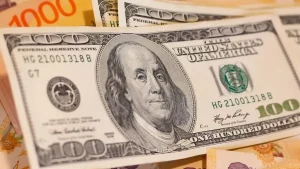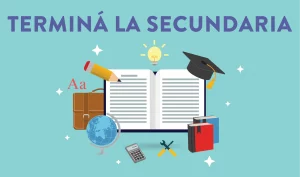How was Machu Picchu built?
The city was built by the Inca Pachacutec, a work of Inca architecture, a whole wing stone monument, a natural majestic place.
It is a steep terrain of the mountain range vilca-bamba, the city of Machu Picchu rose. Constructors had to adapt the topography wing place with slopes and deep gorges commonplace in parts of the mountains made on terraces and in stages.
In that city it had to contraire platforms with irrigation canals to grow corn, coca, and other frustules and tubers.
Metros the upper platforms on two or four meters high sometimes reaching 20 meters long, the material for the construction of all were the stone. Diorite porphyry and especially granites were the most used.
Machu Picchu is known for the high quality of work canteria, how to carve the stones, and the perfect fit on the walls as well as on the surface and laterally admiration and amazement caused the Spaniards.
for transporter large blocks of the quarry wing working area, had to pull the strings of fibers which were subject to over about 30 km, dragged on rollers from hardwood stone ramps were used to raise them.
Girl’s stones could be loaded on the backs of the flames behind the man.
The basic tools were hammer and stone ax.
By putting sand wear operation trying to adapt a block to another until the respective surfaces are perfectly adjusted.
Polishing stones
The procedure to give the desired shape wings stones was simple but laborious and demanded a long time.
1_ estraction: stand and insert wooden wedges in the cracks of the stone to widen.
2_ablamdamiento: inchar poured water timber and deepen the crack until the rock separated.
3_pulido: stone for alisarlay then it pulia with sand and water to give a finished Mojer is percuitia.
Three windows
Despite its name the temple of the three windows originally had five openings; two of Lalas were filled and converted into niche by the Incas themselves.
The windows are the largest of all built for them are 1, 90 meters high.
Between windows is found fragments of ceramics, which could indicate the rupture of vessels and queries.
Temple and condor
The temple of the condor called its name from a rock that protrudes just EDL floor
With the appearance of a condor drinking from a circular fountain.
It has many underground passages and water sources. Until recently they believed that this place functioned as a prison for criminals, but today is considered unlikely.
The tower or the sun temple
It is the only circular construction of Machu Picchu, and is known to run as a solar observatory. Its architecture presents some of the finest work of the Inca constructions. Under the building is a grotto ROYAL TOMB apparently done Descanso the mummy of the Inca Pachacutec. From there also comes a water source that supplies up to 16 more sources.
The tower or the Temple of the Sun
It is the only circular construction of Machu Picchu, and is known to run as a solar observatory. Its architecture presents some of the finest works of the Inca constructions. Under the building there is a cave ROYAL TOMB done apparently rests the mummy of the Inca Pachacutec. There also comes a water source that supplies up to 16 more sources.
The ceremony Sun
June 21 is the shortest day of the year, it was a very important date for the Incas, that day the sun party, dedicated to the god inti held. The ceremony was linked to the agricultural needs, including a strict ritual and abstinence in the days before the festivities.
The steps in the festival of the sun is 5.
1, the flames loaded with food and various goods for the festivities, entering through the front door towards deposits.
2 INTIWIWATANA (SE PIEDRASDONDE TYING THE SUN) was central to the celebration of the winter solstice, a staircase of 78 steps linking it to the main square.
3 The incomplete temple worship in an area of initial stages of construction remained unfinished due to the sudden abandonment of the city.
4 Main square, is the only open space complex, there the festivities unfolded and was also the meeting place of Machu Picchu.
5 Temple of the Sun, exclusively restricted to royalty, the layout of the building signaled the arrival of the winter solstice.
In Machu Picchu during the winter solstice, the suns rays pass through the windows of this temple of the sun, also called tower. The suns rays fall on the sacred rock that fills most of the room. An international court on that rock, framing rays entering through the window shows that the Inca temple was an astronomical observatory.
WHO WERE THE VIRGIN OF THE SUN?
It was a select group of women chosen to belong to the nobility and its beauty, made a vow of chastity to devote himself to the role of wife of the sun god. Were the virgins of the sun, a term set by the Spanish conquistadors.
What caused the abandonment of Machu Picchu?
The taking of Cusco by the Spaniards in November 1533 sentenced the decline of the city of Machu Picchu.
It is believed that the few people left in the city to quickly absented 1540 to escape the risk of running into Spanish. The invading troops had begun to penetrate the area vilca Bamba, (next to the sanctuary) take refuge where the bulk of the Inca resistance.
TREASURES OF THE INCAS
The architectural skill of the Incas, their ingenuity and skill, however also extended to other artistic expressions, textiles, ceramics, jewelry and ornaments made in other materials are manifestations of their competence as artisans.
TEXTILE ART
Like the rest of the Andean cultures, the Incas were skilled weavers, heirs to a centuries preceding the emergence of Cusco tradition. To make their garments, the Incas used horizontal and vertical looms, with frames composed of many threads, allowing make designs in great detail. They used wool llama, alpaca and vicuna, the latter was reserved only for royalty. The alpaca can be up to 22 cabbages, the greatest diversity in the world for producing animal wool.
SILVERSMITHS
These silver sculpture performed as a worked fine alpaca silver plates and flames rimmed and decorated with geometric motif.
VESSELS CEREMORIALES
The queros (meaning wood) but also made of clay or metal usually have geometric decorations and figurative.
sacrificial CUCHILLOS
The Tumis are ceremonial knives which have a characteristic semicircular blade and a handle with a figurative representation, usually a deity. They are common throughout the Andean region and towns were known before the Incas, as the Sican culture. They were used in religious sacrifices and no surgical evidence. Usually they were made of a single metal sheet.
SACRED PLANTS
The corn crop was a luxury for the Incas, as the mountain of the Andes geographic did not favor its production, restricted, therefore, to the valleys. With this plant produced chicha, an alcoholic beverage used in rituals, which is still very popular in the Andean region, where Machu Picchu mills were produced chicha probably found.





